Turning science into solutions
by Ian Mundell
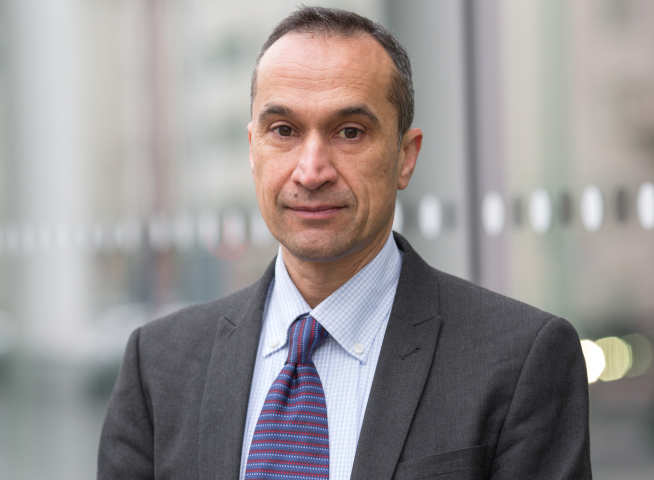
As you go into Imperial's Department of Chemical Engineeringyou pass a four-storey, industrial-scale carbon capture pilot plant. Used for teaching and research, it is a powerful sign that the College is in the business of addressing real-world problems, and producing engineers ready to make a contribution in industry. The same commitment can be seen in the research taking place in the Department and the companies created by Imperial's chemical engineers.
“Chemical Engineering is a substantial department, and quite a heavy hitter in its size, breadth, depth and quality,” says Professor Nilay Shah, the Head of Department. “What stands out is that we work in critical-mass teams on a number of broad challenges, as well as developing our individual research topics. Those challenges are in areas like sustainability, energy, healthcare and developing new materials.”
From science to solutions
This plays to the strength of chemical engineering as a scientifically driven discipline. “We look at fundamental developments in the chemical, physical and life sciences that we can exploit in engineering applications,” Professor Shah explains. “There is a strong link with science, but there is a focus on solutions.”
“Chemical Engineering always has been one of our most interactive departments,” says Professor Nigel Brandon, Dean of the Faculty of Engineering. “It reaches out to departments like Materials Science, Chemistry, Electrical Engineering and Mathematics. It also helps the College deliver its strong commitment to addressing global challenges, by playing a very important role in our Energy Futures Lab and our Grantham Institute for climate change and the environment, for example.”
From biofuels to vaccines
For Professor Jason Hallett, the experience and ideas that postdocs bring with them are particularly valuable. “By far the easiest way to cross-fertilise ideas is to hire people from other places, especially those with different research backgrounds,” he says.
It was a postdoc with a medical background who inspired Professor Hallett to look at a new application for an enzyme stabilisation method he had developed for biofuel production. “One of the knock-on effects of the method was that the proteins became very thermally stable,” he recalls. “It occurred to us that if we could increase thermal stability of enzymes by 70–100 degrees, why couldn't we do the same thing with therapeutic proteins, such as vaccines?”
This is important because most vaccines must be transported and stored at very low temperatures in order to preserve their effectiveness. Maintaining this 'cold chain' is particularly challenging in tropical countries and represents a significant proportion of the cost of any vaccine campaign. “If we could increase the temperature at which vaccines are stable by 100 degrees, they would be stable at room temperature and at that point you've conquered one of the biggest problems of vaccine manufacturing.”
The thermo-stabilisation method has now been adapted for protein-based and RNA vaccines. “At the moment we can store these vaccines indefinitely at room temperature,” Professor Hallett says. The next step is to make sure they still function as they are meant to when given to patients.
Predicting scale-up
Vaccine manufacturing will benefit in a different way from tools being developed by Professor Shah's group. The aim is to predict how four vaccine production methods currently at the experimental stage in Imperial's laboratories can be scaled up for production in tropical countries, with all the local constraints involved.
“We are developing modelling and other computational methods to produce design blueprints that we can then show to our partners in Africa and Asia,” Professor Shah explains. These would tell them the equipment and materials they will need, how to put them together and get the process working, how much vaccine it will produce and the predicted cost per dose. Rather than simply tweaking a system that already exists, the task is to predict how an entirely new system will behave. “You need a high-quality method, which can cope with a paucity of data, and that can tell you precisely which additional data are important to build a design that will work at full scale.”
This data might not otherwise be collected at the experimental stage. For example, researchers focusing on producing a particular molecule effectively might not think too much about impurities. “But when you go to larger scales you want to know what risk there is of making impurities, the circumstances under which you are more likely to make impurities, and then what you can do about any impurities that arise.”
While this vaccine production work is still at an early stage, Professor Shah's group has gone further applying this approach to a novel technology to remove carbon dioxide from natural gas, known as gas sweetening. “The research we've done with our industrial partner has been instrumental in designing a pilot-scale and now a demonstration-scale plant,” he says. “That has gone even better than we expected. The predictions are working out very accurately.”
Carbon neutral biofuels
Meanwhile, Professor Hallett's main research work with biofuels has recently yielded a spinout company, Chrysalix.
Commercial biofuel production methods, which physically break up the plant material concerned, are only moderately effective, and alternatives are proving difficult to develop. One option being explored is the use of ionic solvents – essentially liquid salts – to dissolve the plant material. The cellulose can then be removed by precipitation, and turned into glucose and fermented to make bioethanol.
The ionic solvents capable of doing this are extremely expensive. Professor Hallett's idea was to leave the cellulose where it was, and use cheaper ionic solvents to selectively dissolve away the lignin and other constituents of the plant matter. This approach, which was developed with Dr Agi Brandt, in Chemistry, proved to be less expensive, more energy-efficient and allowed a wider range of fuel sources to be used.
“Rather than looking just at energy crops, such as switch grass, we could look at straw and other agricultural residues, and even sources such as contaminated waste wood,” he explains. If fertilisers are not required for the source crops, the process can achieve carbon neutrality. “You can grow the crops, process them and burn the ethanol without having a net CO2 emission.” It is now the task of Chrysalix to commercialise this method. “The science is down, and we now have a series of engineering challenges ahead of us to turn this into a process.”
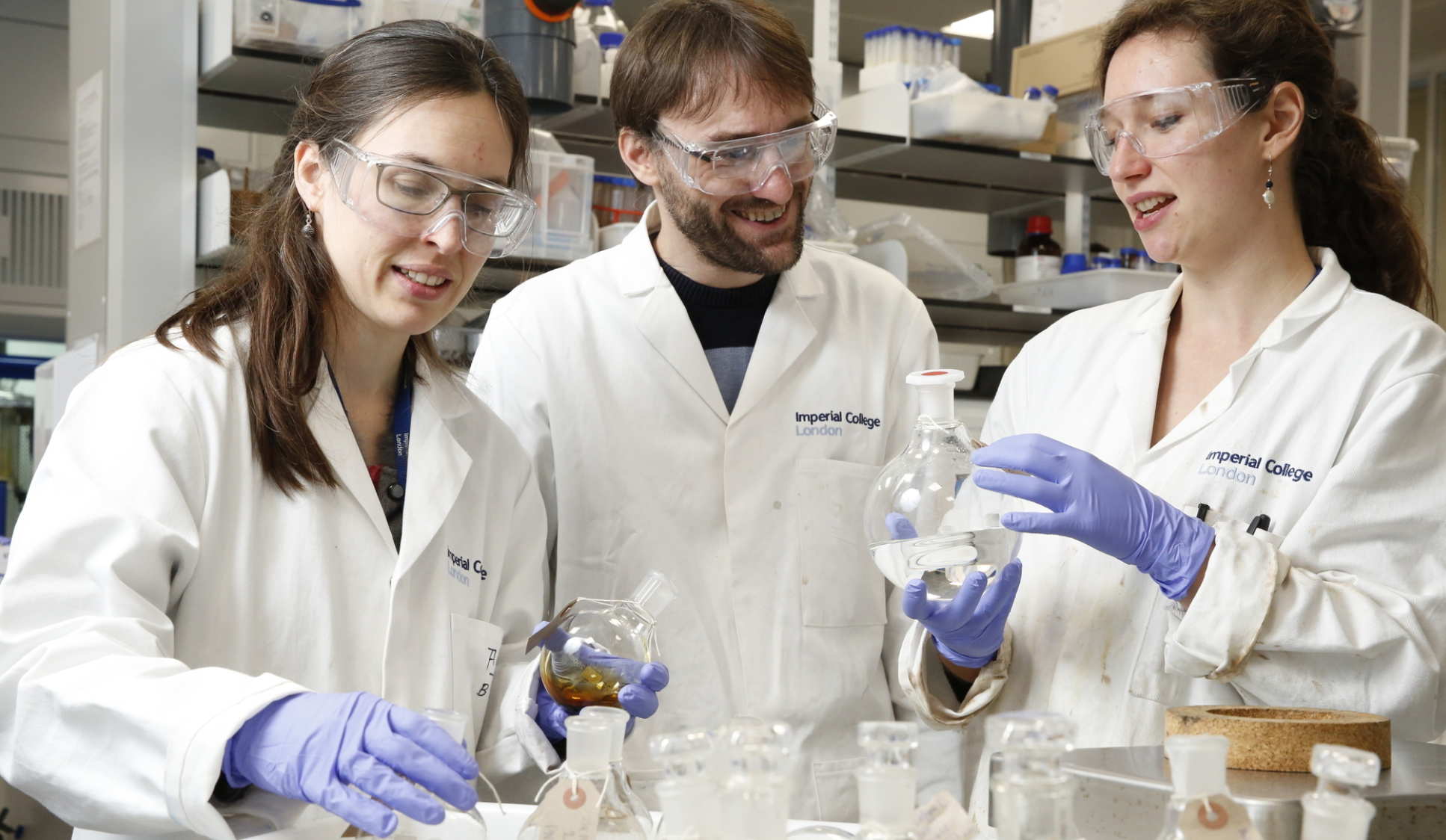
An enterprising chemist
The company's chief executive is Dr Florence Gschwend, who recently completed her PhD research with Professor Hallett, applying the ionic liquid method to waste woods laced with heavy metals. This work was co-funded by Climate-KIC, a European Union climate change initiative. "I asked Jason and Agi whether they were still trying to commercialise the method and, if so, if I could get involved," she recalls. As a result, they shifted from large-scale bioethanol production to smaller scale production that also solved another problem, such as contaminated waste wood.
Since setting up in 2017 the company has pivoted again, responding to commercial demand. “The main interest we are getting at the moment is not for using contaminated waste wood, but sawdust from timber mills, agricultural or orchard residues, or shells from different kinds of nuts,” Dr Gschwend explains.
Talks are under way on the first license agreement, and they are studying other products from the process, such as uses for the extracted lignin. The company is also looking for seed funding and further partners.
Exact polymer production
When Professor Andrew Livingston set out to address a challenge in polymer manufacturing, the result was a new process, an exciting range of possible applications, and a spinout company. The problem related to synthetic polymers, such as the polyethylene glycols (PEGs) used in biopharmaceuticals to increase the half-life of medicines by preventing them from being broken down in the body. It equally applies to the production of biopolymers, such as oligonucleotides and peptides, which are increasingly important as drug candidates for the pharmaceutical industry.
Conventional methods for manufacturing PEGs involve assembling monomers using randomly determined or stochastic chemical reactions. This results in a product where the desired length of polymer may dominate, but chains of other lengths are also present – called a polydispersion. "Until now, there was no way of knowing if this polydispersion affects the product's function or not, because you couldn't access the pure polymer to compare it," Professor Livingston explains.
The Livingston group's alternative method involves attaching the growing polymers to a hub molecule that is dissolved in a liquid – they call this macromolecular construct a ’nanostar‘. After each reaction cycle increases the length of the polymer, the liquid is passed through a membrane with nano-scale pores that sieves out the nanostars, letting leftover monomers and other reaction debris drain away. “Due largely to this process, we can make polymers that are 100% accurate, in the molecular sense.”
The most challenging aspect of the work has been to make sure every reaction runs to completion. Failure to do so can result in a mixture of polymers differing by just one monomer, which are very hard to distinguish and separate. Luckily the method is amenable to fine tuning. "Because we are working in the liquid phase, we can analyse the molecules in solution and see whether they have linked properly." This kind of monitoring and control is not possible in stochastic chemical reactions, or in solid-phase systems.
As well as producing exact polyethylene glycols, the method – called Nanostar Sieving – opens up the possibility of building polymers with precise sequences of different monomers. Labelled in different ways, these might be used to encode information, or to introduce different functionalities. "You could imagine reacting a drug onto the polymer, an imaging agent or a cell-penetrating peptide, creating a multi-functional molecule from the different monomers."
The next step is to explore these possibilities. “Now that we can make polymers with unprecedented accuracy, we are able to explore how to use them, and what the implications of that accuracy are for the functionality of materials we make.”
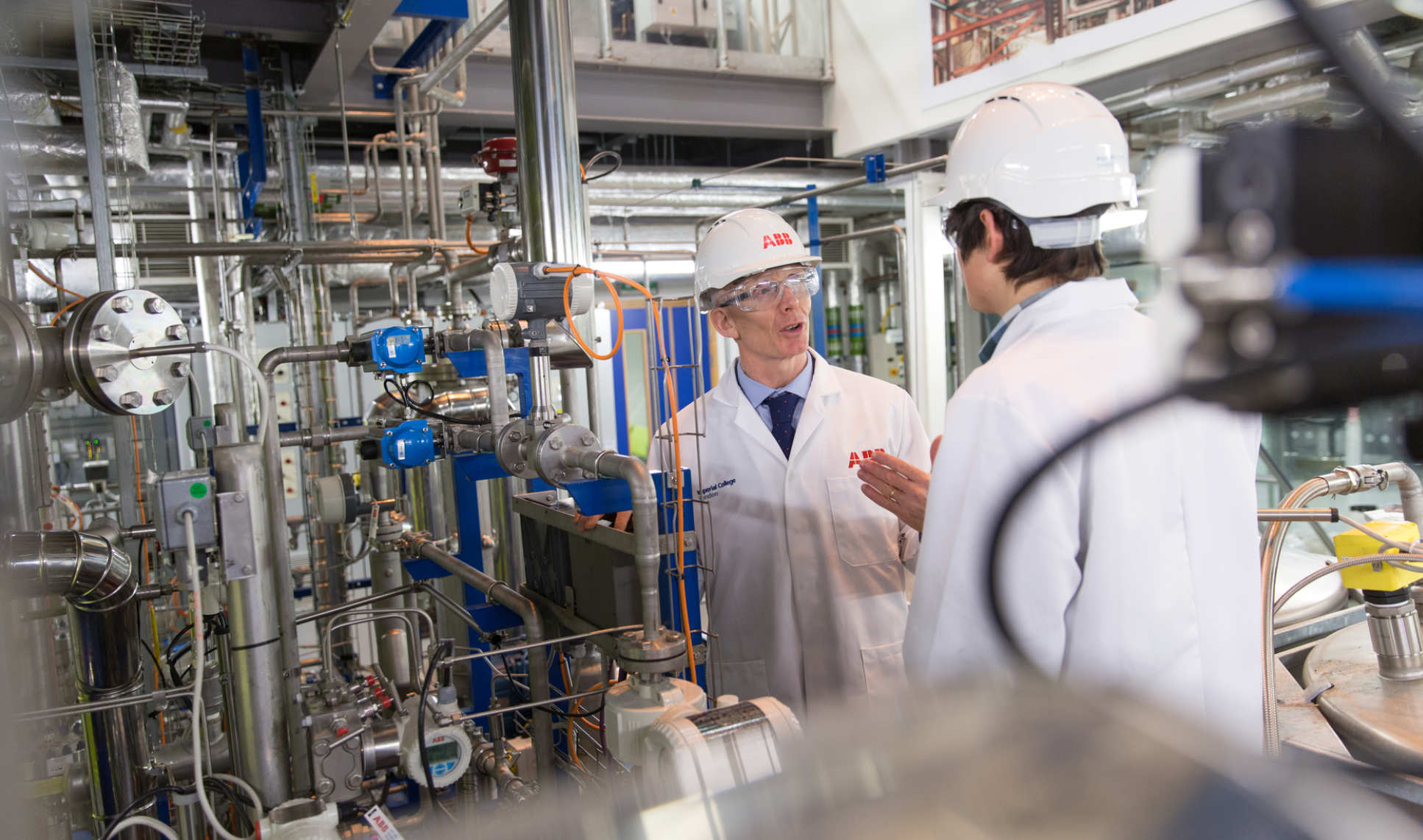
Polymers made to measure
The technique is being commercialised by Professor Livingston’s spinout company Exactmer, with Dr Piers Gaffney from his group. Part of the company's business will be based on precisely constructed polyethylene glycols, but they also hope to manufacture therapeutic oligonucleotides and other sequence-defined drugs for the pharmaceutical industry.
This is where Dr Gaffney's long experience as a synthetic organic chemist comes in. “The synthesis of these polymers was automated long ago, and not many people still know the minutiae of oligonucleotide or peptide chemistry,” he says. “My role in Exactmer is to keep the science moving forward, while maintaining a firm view on the products we are trying to make and sell.”
A particular selling point should be the scalability of Exactmer's method. "If we get this right, we will be able to make a membrane system that could produce 250kg or even a tonne at a time," says Dr Gaffney. "We are demonstrating that we've got scalable synthesis."
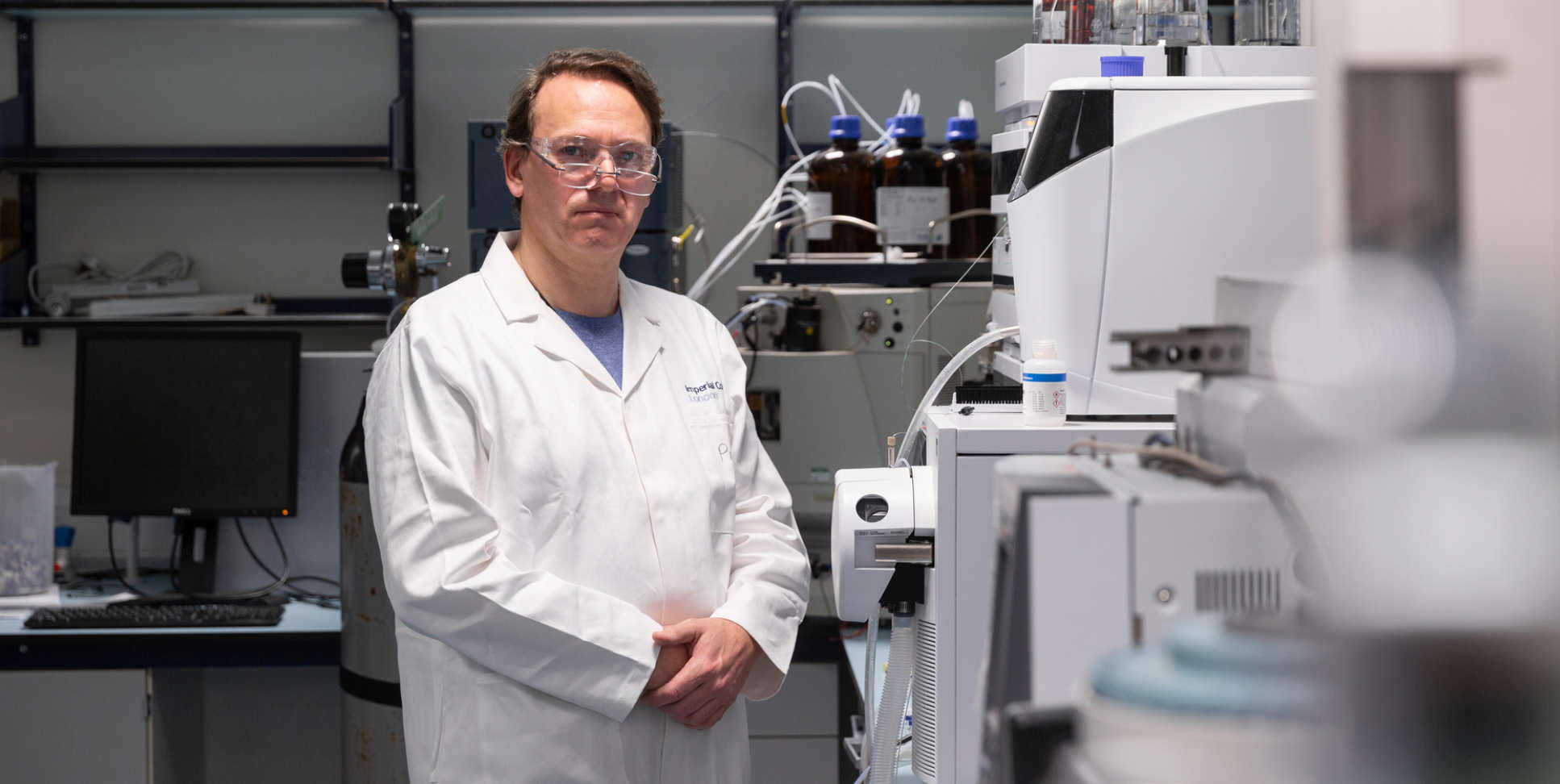
Energy storage solutions
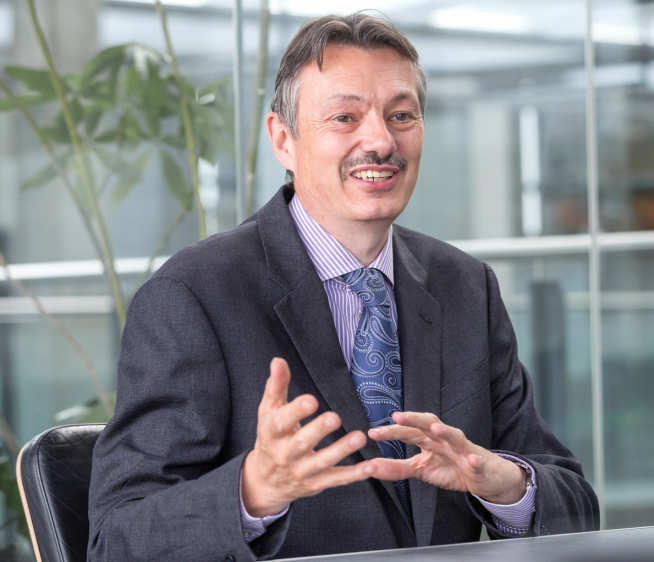
Just as the Department of Chemical Engineering has researchers from a range of disciplines, so there are chemical engineers in other departments. Professor Brandon is one, an electrochemical engineer now based in the Department of Earth Science and Engineering, where his research focuses on energy storage devices, such as fuel cells and batteries.
“I'm interested in the relationship between the materials you use, how you process and fabricate them into devices, and how those devices work in practice,” he says. In the case of energy storage, the decline in storage performance over time is a particular challenge. “We are interested in why these devices degrade, and the interaction between how they are used and the fundamental changes in material stability that occur,” he says.
Professor Brandon has co-founded two spinout companies from his research. Ceres Power, created in 2001, is developing fuel cells that will work with hydrogen, biogas, natural gas or other fuels, for applications like transport and power generation in domestic or business settings. This technology is close to commercialisation, so the academic contribution is now on trouble-shooting. "Our role is developing tools and methods that will help the company, and others, understand why materials behave like they do in service."
RFC Power, created in 2018, aims to commercialise redox flow battery technology developed at Imperial. Suitable for storing between 4 and 24 hours of energy, this kind of battery would be ideal for applications such as balancing the intermittent flow of power from renewable sources. But one research challenge remains: improving the performance of the catalyst on one of the electrodes. "Everything else is there, but we need a catalyst that is ten times better," Professor Brandon explains. "We know if we can get a ten-fold increase in activity we would have potentially the lowest possible cost for storing electrical energy. That's a very big prize."
Fundamental improvements
These are challenges that PhD students such as Catalina Pino Munoz are addressing. She studied chemical engineering in Chile, before working for a short time in the mining industry. Her PhD involves modelling all-vanadium redox flow batteries and hydrogen-vanadium fuel cells.
"My work is related to understanding the interplay of various physicochemical phenomena inside these systems, such as transport phenomena and electrochemical reactions. The mathematical model allows me to distinguish the key phenomena, and the component properties that most affect the system's performance."
She finds it a rewarding area to work in with engineers and chemists working alongside designers. "We do fundamental research, not only because it is interesting in itself, but to improve the systems so that they become a commercial reality."

A strategy for the future
Looking forward, the Department of Chemical Engineering is not resting on its laurels. “We've been working on a strategy that will bring us from being a top ten department in the world, to a top three department,” Professor Shah he says. “That has a number of strands around student experience, research and its impact, and particularly around people, culture and behaviour.”
The Department has been at the forefront of a push to update engineering education at Imperial, and Professor Shah wants to see its research have a greater impact. "We want to be more proactive in getting early stage ideas into prototypes, demonstrations and on to market," he says.
To this end, the Department has recently set up its own seed fund for technology development. "We want to run at least two funding rounds a year, and fund up to three projects per round." This support is not just to create spinouts, but might equally support other forms of technology transfer, such as licensing to industrial partners. "You can fast-track a lot of the translation stages by working with the scale and resources of a big company."